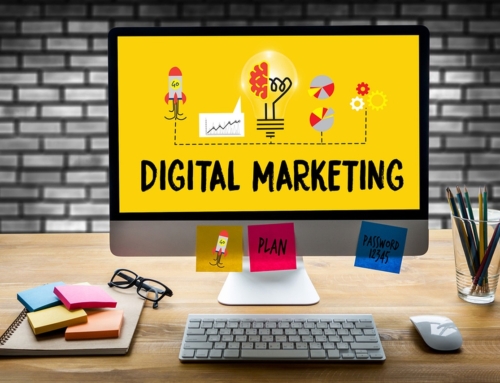Article #3 in the Series – 25 B2B Content Marketing Mistakes: Embracing Diversity in Content Marketing: A Guide for Wastewater Industry Leaders
In today’s evolving landscape content marketing has emerged as a critical element of successful branding. By viewing it as a tool, for competitive edge it is essential to understand the significance of engaging with audiences on a deeper level. Come along with us as we delve into the importance of embracing diversity in content marketing.
Similar to navigation systems that find the routes to different destinations, content marketing thrives when we blend various perspectives to reach a diverse audience.
By recognizing, valuing and integrating viewpoints, you can achieve a level of creative excellence that will deeply resonate with your audience and lead to transformative outcomes. Lets embark on this journey towards success in content marketing, where the fusion of diversity and creativity takes center stage.
In today’s age the importance of content cannot be overstated. It’s not just about any content but about creating consistent and brand aligned content that truly connects with your target audience. As leaders in the wastewater sector you have an opportunity to educate, engage and inspire through various content channels.
Knowing your audience is crucial for a content strategy. Whether it’s a plant manager aiming for efficiency or a municipality focusing on sustainability your content should cater to their needs and capture their interest and be delivered the way they like to receive information.
Content Types and Their Roles
- Informative Articles and Blog Posts
Showcase your expertise by sharing insights. Write articles that discuss the advancements in treatment technologies or updates in regulations. Educate your audience. Position yourself as their go-to source for information.
- Case Studies and Success Stories
Success stories are narratives that highlight the impact of your wastewater industry solutions. Let your accomplishments speak for themselves as they narrate our journey of change.
- Visuals, infographics, and Data Representation
Visuals play a role in our industry by simplifying data effectively. Through infographics, you can communicate your message clearly and efficiently. These visual aids make it easier to understand complex information.
- Videos
Take your audience on a journey, behind the scenes by showcasing facility tours, client testimonials and animated videos to explain processes, capabilities and benefits. Videos help establish a stronger connection with your audience and are the most viewed or shared form of content.
- White Papers and e-books
When you need to dive into a topic, white papers and ebooks offer content that can position your company as a leader in innovative thinking and generate valuable leads.
- Social Media Short Posts
Social media provides interaction opportunities where you can share quick updates, stay informed about industry news and actively engage with your community in real time.
- Email Newsletters
To ensure that your brand stays top of mind for people it’s important to send out newsletters. By personalizing your messages and targeting audience segments you’ll see an increase in engagement levels.
- Webinars and Online Workshops
Enhance the nature of education by hosting webinars and workshops where you can discuss industry trends, address questions and showcase your expertise.
The Importance of Variety in Content Marketing

Diversity holds a role in the realm of interactive content where capturing and retaining an audience’s interest is an ongoing challenge. It surpasses trendiness; diversity acts as the engine behind excellence fueling successful advertising endeavors.
Lets delve into why diversity is crucial for content marketing;
- Genuine Representation; By incorporating viewpoints your content can authentically resonate with audiences strengthening relationships and building trust.
- Foster Innovation; Embracing perspectives spurs innovation, resulting in ideas that break through monotony, stand out amidst competition and inspire creativity within your team.
- Broadened Audience; Embracing diversity expands the reach and inclusivity of your content engaging demographics that may have been previously overlooked.
- Incorporating a content strategy is crucial, for understanding and respecting cultures helping to prevent misunderstandings that could isolate or upset specific communities.
Collaborating in teams allows for an empathetic and insightful approach to complex social or industry issues as individuals from different backgrounds bring unique perspectives and experiences to the table.
Companies that prioritize diversity are better prepared to adapt to the changing environment ensuring their relevance in an ever evolving world.
By implementing a range of content strategies businesses can set themselves apart from competitors by showcasing values that resonate with consumers.
In today’s interconnected landscape diversity serves as a driving force that elevates content quality enabling the creation of engaging narratives that connect deeply with audiences while maintaining a human touch.
In Conclusion
Diversity is pivotal in propelling us towards creativity. It extends beyond variations encompassing a mosaic of ideas, cultures, and experiences that enrich the accessibility, authenticity, and engagement of content. The fusion of perspectives sparks creativity, challenges existing beliefs and builds connections with our audience.
The importance of diversity cannot be emphasized enough. It not only meets an obligation but also offers strategic benefits. By embracing diversity we welcome a community that resonates with our brand. Understanding our customers through diversity, crafting content and fostering genius among varied teams empower us to produce content that reflects the wide spectrum of human experiences, promotes inclusiveness and boosts our creative abilities.
Lets leverage the potential of diversity to attain excellence in creativity, as content creators, marketers and advocates.










